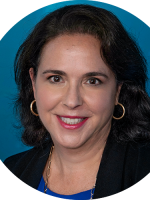As she walks the grounds of Monticello, Gayle Jessup White tells the story of those who once lived there - the enslaver, Thomas Jefferson, who enslaved more than 600 people, and the enslaved families he forced to work there. White is related to both families. “I couldn’t put together in my 13-year-old mind how a little Black kid growing up in Washington, D.C. could be related to the third president of the United States of America,” says Gayle Jessup White.
White spent four decades tracing her ancestry and discovered through DNA that she is related both to Thomas Jefferson and to Peter Hemings, Sally Hemings’ brother. She works at Monticello and last year she published her memoir, “Reclamation: Sally Hemings, Thomas Jefferson and a Descendant's Search for her Family’s Lasting Legacy.” White hopes sharing her family story will help future generations better understand Thomas Jefferson and American history and continue the work of honoring the enslaved people and their role in shaping this country.
TRANSCRIPT OF THE VIDEO:
DENNIS TING: Every year, hundreds and thousands of people come to Monticello here in Charlottesville to learn about American history, and for some, to connect with their family history.
GAYLE JESSUP WHITE: I’m Gayle Jessup White. I am public relations and community engagement officer here at Monticello.
DENNIS TING: Gayle Jessup White is no stranger to the history of Monticello…
GAYLE JESSUP WHITE: Little children, 8, 9, 10 years old, made the bricks that built Monticello. Go ahead, put your finger in.
DENNIS TING: But the home of the third president of the United States of America isn’t just her office.
GAYLE JESSUP WHITE: I’m descended from Thomas Jefferson.
DENNIS TING: That’s right, Jessup White isn’t just any employee at Monticello. She first heard she was related to Thomas Jefferson when she was just 13 years old, a huge surprise then, especially because Jefferson was her favorite president at the time.
GAYLE JESSUP WHITE: I couldn’t put together in my 13-year-old mind how a little Black kid growing up in Washington, D.C. could be related to the third president of the United States of America.
DENNIS TING: This set off a decades-long search for the truth of her history. But while she thought she was a descendent of Jefferson and Sally Hemings, a woman he had enslaved and had children with, she learned later she was actually descended from Jefferson and his wife Martha… through one of their great-great grandsons, and...
GAYLE JESSUP WHITE: I’m also descended, I learned, from a brother of Sally Hemings. His name was Peter Hemings.
DENNIS TING: Peter Hemings was enslaved at Monticello, working as a cook, a tailor, and a master brewer, working in the rooms she now walks through generations later.
GAYLE JESSUP WHITE: So this space for me is hallowed ground because I know my great-great-great grandfather was here.
DENNIS TING: Like many other descendants of those enslaved at Monticello, Jessup White first learned of her family line through oral history, passed down from generation to generation. Many of these stories do not focus on their enslavement, though it certainly casts a large shadow.
GAYLE JESSUP WHITE: I feel their sacrifice. I feel their suffering. But I also feel their joy.
ANDREW DAVENPORT: They chose instead to talk about their family members, people that they know, places that they know.
DENNIS TING: For decades now, historians like Andrew Davenport have worked to preserve these oral histories from those enslaved at Monticello to paint a more complete picture of the experiences of those enslaved and of the slave owner, Thomas Jefferson.
ANDREW DAVENPORT: Each of them speak to personal flaws of Jefferson. Each of them speak to qualities of great brilliance in Jefferson.
DENNIS TING: Davenport, the director of the Getting Word Oral History Project, says the more than 200 oral history interviews collected from people enslaved by Jefferson show a complex figure - the writer of the Declaration of Independence, declaring all men to be created equal, yet a slave owner who owned more than 600 people during his lifetime.
ANDREW DAVENPORT: We can look a historical figure in the eye and understand that they are flawed and brilliant at the same time and doing both I think will be our gift to the American public moving forward.
GAYLE JESSUP WHITE: And that’s hard to deal with. That’s hard to face, especially since I admire him so, and especially since his blood runs through my veins.
DENNIS TING: But Jessup White says learning about Jefferson’s complicated history and the stories of those he enslaved, has helped her come to terms with who they were, not as mythological figures, but as human beings.
GAYLE JESSUP WHITE: My ancestors literally built Monticello. Those people, my ancestors, made Monticello work. And they represent the millions of people enslaved in the United States of America.
DENNIS TING: For Jessup White, her search for the truth has led her to not only find her ancestors, but also current relatives, some working just down the street, like Andrew.
GAYLE JESSUP WHITE: He’s my cousin.
ANDREW DAVENPORT: My great-great grandfather and her great-grandmother are siblings.
DENNIS TING: It’s been a journey spanning decades, but Jessup White hopes sharing her family story will help future generations better understand Thomas Jefferson and the history of this country and continue the work of honoring the enslaved people and their role in shaping America.
GAYLE JESSUP WHITE: Discovering this history has made me whole. It’s given me a family. It’s given me roots. It’s given me joy.
DENNIS TING: That work is still continuing. Just this year, Monticello held a rededication ceremony for the Burial Ground for Enslaved People. This came after a four-year project that was guided by the descendants of the people enslaved at Monticello. In Charlottesville, I’m Dennis Ting, for VPM News Focal Point.








